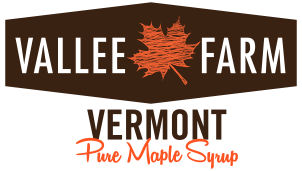Warm days and cold nights mean the sap is finally running, and we’re busy at the sugarhouse making this year’s batch of Vermont pure maple syrup. The “first boil” usually occurs in late February, and then things really start happening during March and sometimes even heading into April. Perfect maple sugaring weather is a combination of warm days (40 degrees or more) and cold nights (below freezing). The frigid temperatures at night perpetuate the freezing and thawing cycles and pressure that keeps the sap flowing in the maple trees.
Our family has been making Vermont pure maple syrup for over 40 years. The main sugarhouse sits on a hill in the woods; you can see the steam rising above the trees before you arrive. We currently run two large evaporators (aptly named as the steam escapes and the sap becomes more concentrated). Before entering the evaporator pan to be boiled, the sap travels through a reverse osmosis machine (R/O) to expedite the process. The maple syrup is filtered to remove any final impurities before being bottled or canned.
It takes 40 gallons of sap to make one gallon of maple syrup, with a lot more time and effort going into that gallon. There are hundreds of hours of manual labor that occur before one drop of maple syrup is even produced. From splitting and stacking wood for the evaporator, to cleaning the sugarhouse and equipment to USDA standards, and miles of pipeline being installed – making pure maple syrup is a labor of love.
We tap our trees conservatively and constantly strive for best practices to maintain the health of the sugarbush. Recent organic certification has been achieved through a rigorous evaluation and compliance process. We are extremely pleased to be producing and delivering certified organic Vermont pure maple syrup – from our farm to your table!

 Bucket
Bucket